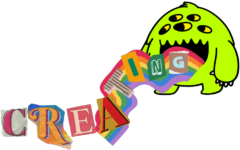Reading the section “Code Communication” made me recall a thought process I often pondered. It is a simple question: “Why does one plus one equal two?” and not some obscure set of symbols? What does obscurity mean in the first place? We associate “1” with “one” because that is the predefined convention established by mathematicians. If different symbols were used, as long as there was a consensus on their meaning, the fundamental concepts wouldn’t change. This general consensus is what forms the basis of code communication that the book refers to.
Even in the title of this very blog, you might have been irked by the simultaneous use of a comma following a question mark. Since it deviates from the established norm, we have difficulty accepting it. Sure, one plus one equals two but that is only in the decimal number system. In binary, one plus one equals ten. So which is it? Two or ten? Both. “10” represents the same quantity that “2”. Because these number systems have different consensus, they have different codes to communicate by. And do not get me started on languages and their complexities. Perhaps, in a hypothetical alternate timeline, we have a simple system. Perhaps there, one plus one equals three.
